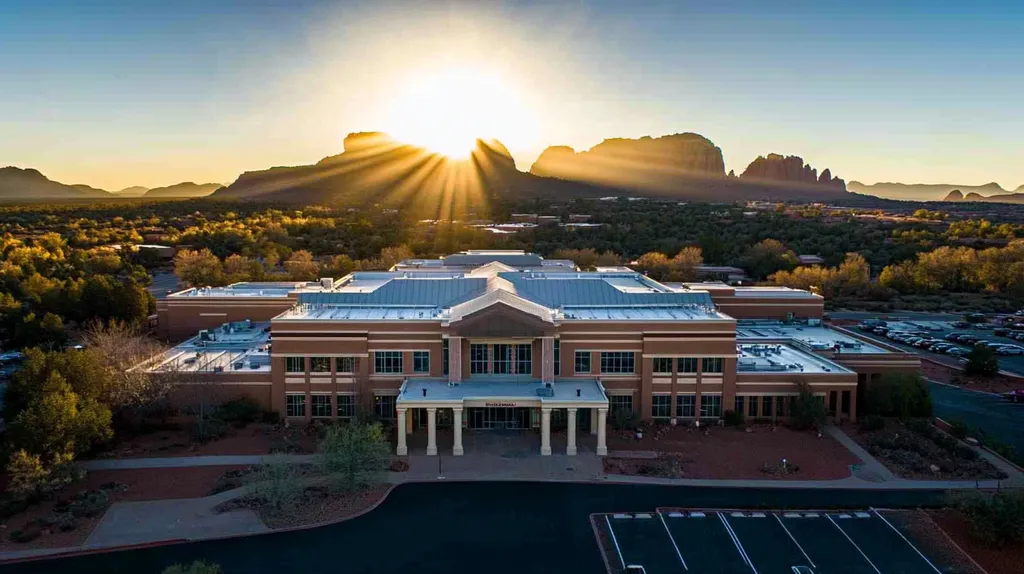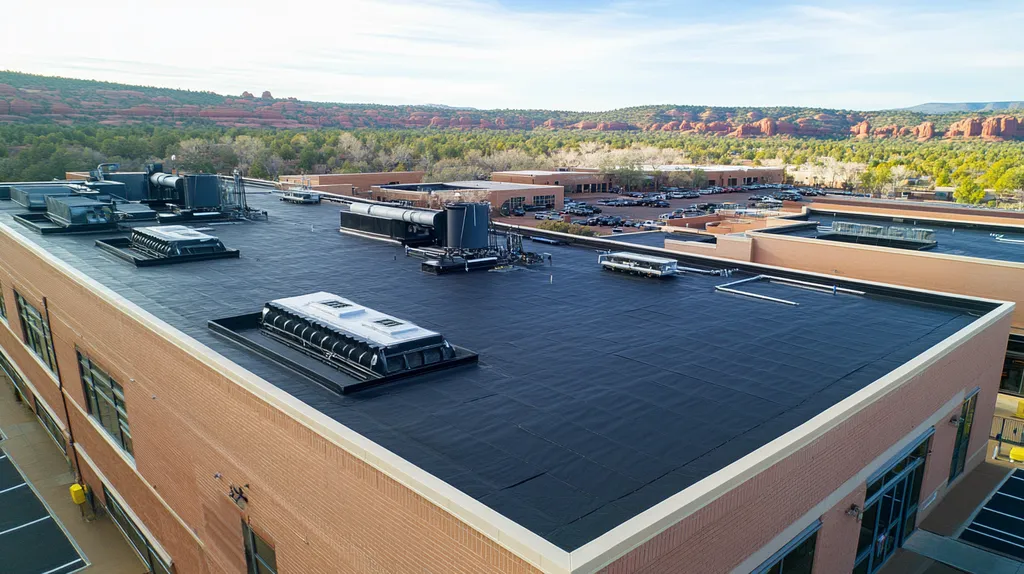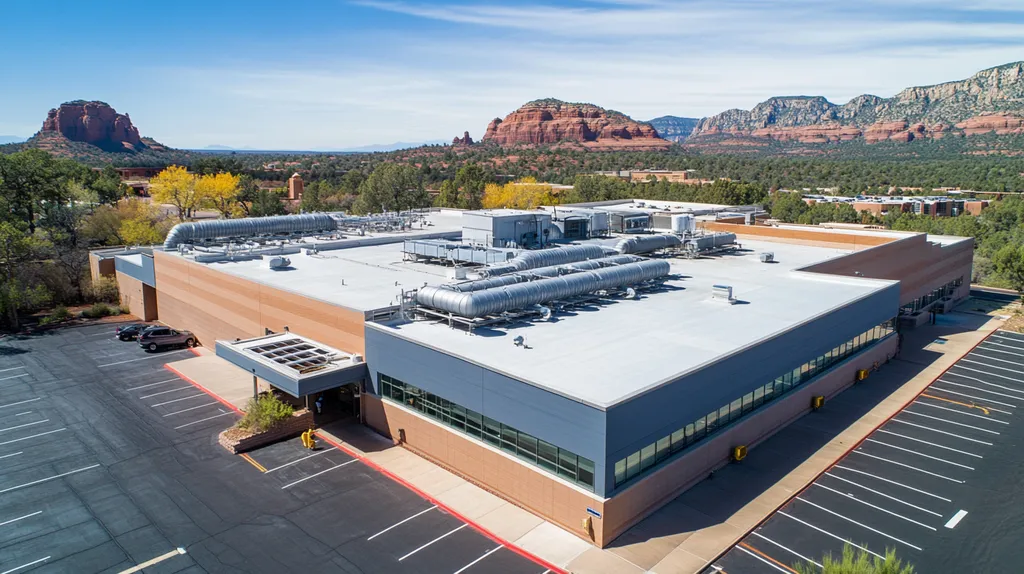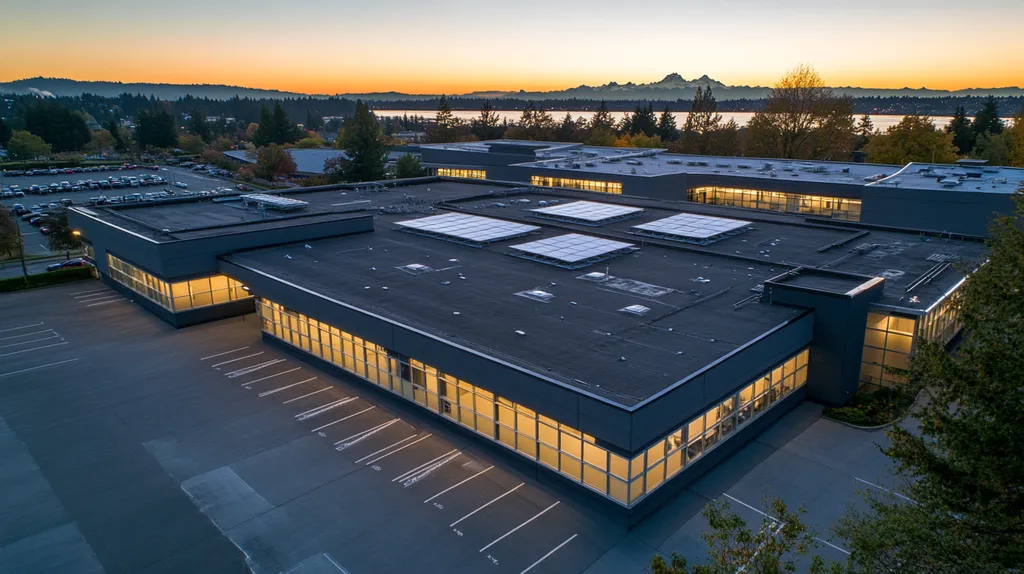Welcome to today’s Battle Royale featuring two roofing heavyweights: “Slate Roofing” in the east corner versus “Asphalt Shingles” in the west!
Tonight’s showdown pits these contenders against each other across six punishing rounds designed to test every aspect of their performance for Historical Commercial Roof Renovation.
At stake? Millions in potential costs, decades of building protection, and the critical performance demands of modern commercial and industrial facilities.
Our professional judging panel will evaluate each round on technical merit, real-world performance, and value delivery. After all six rounds, we’ll declare our ultimate champion.
Ladies and gentlemen, facility managers and building owners… it’s time to rumble!
ROUND 1: INITIAL COSTS & INSTALLATION
When renovating historical commercial properties, the roofing material choice can impact project costs by hundreds of thousands of dollars. For a 10,000-square-foot commercial roof, slate materials alone can exceed $300,000, while asphalt might cost just $50,000. This stark difference in initial investment makes it crucial for property owners to understand the full scope of costs, installation requirements, and timeline implications.
Material Expenses
Premium slate roofing materials command $10-30 per square foot, reflecting their natural durability and historical authenticity. These materials often require specialized quarrying and finishing processes, contributing to their higher cost point but ensuring authentic historical preservation.
Asphalt shingles present a more economical option at $1-5 per square foot, making them attractive for immediate budget considerations. However, their modern appearance may compromise historical accuracy, and their shorter lifespan means more frequent replacement cycles.
Repair and installation of slate roofing require specialized construction skills, with specifications mandating restoration experience involving similar materials and methods used in historic buildings. Procuring matching materials often requires custom fabrication, extending both costs and timelines. (source: U.S. General Services Administration)
While slate carries higher upfront costs, its century-plus lifespan provides superior long-term value for historical properties. Therefore, for material expenses, slate roofing claims an “ADVANTAGE” in historical renovations.
Installation Complexity
Slate installation demands specialized expertise and precise techniques, requiring experienced craftsmen familiar with historical roofing methods. Each slate piece must be carefully handled and properly secured to prevent future issues, making the process intricate and methodical.
Modern asphalt shingles feature standardized installation processes that most roofing crews can execute efficiently. Their lightweight nature and uniform sizing simplify the installation process, reducing labor requirements and potential complications.
The straightforward nature of asphalt shingle installation translates to lower labor costs and reduced risk of installation errors. For installation complexity, asphalt shingles earn an “ADVANTAGE” due to their simpler application process.
Project Timeline
Historical slate roofing projects require extensive preparation, including structural assessment and material matching. Installation proceeds methodically, with each slate piece individually placed and secured, often extending projects to several weeks or months.
Asphalt shingle installation can typically be completed in a quarter of the time required for slate. Their simplified installation process and readily available materials allow for rapid project completion, minimizing business disruption.
The efficiency of asphalt shingle installation provides significant timeline advantages for commercial properties needing quick completion. For project timeline considerations, asphalt shingles gain an “ADVANTAGE.”
ROUND 1 WINNER: SLATE ROOFING
ROUND 2: DURABILITY & LIFESPAN
In historical commercial renovations, roofing material longevity directly impacts both preservation goals and financial planning. Recent industry data shows that premature roof failures can cost property owners up to five times the initial installation expense in emergency repairs, business disruption, and accelerated replacement cycles.
Material Resilience
Natural slate’s density and composition make it virtually impervious to weather extremes, fire, and biological growth. These properties allow slate roofs to maintain their protective capabilities and architectural character for generations with minimal intervention.
The National Park Service emphasizes that slate roofing’s durability makes it the preferred choice for preserving historic building character, despite higher upfront costs. Its ability to withstand severe weather while maintaining historical authenticity gives it unmatched preservation value. (source: National Park Service)
Asphalt shingles, while improved through modern manufacturing, remain vulnerable to UV degradation, thermal cycling, and impact damage. Even premium architectural shingles typically show significant wear within 20 years of installation.
For material resilience, slate roofing claims a clear “ADVANTAGE” due to its superior weathering characteristics and proven long-term performance.
Maintenance Requirements
Properly installed slate roofs require minimal routine maintenance beyond periodic inspections and gutter cleaning. When repairs are needed, individual slates can be replaced without compromising the integrity of surrounding areas.
The dense composition of slate resists moss growth and moisture penetration, reducing the frequency of cleaning and preventive treatments. This self-maintaining quality helps preserve both the functional and aesthetic aspects of historical structures.
Asphalt shingles demand more frequent maintenance interventions, including granule loss assessment, algae treatment, and replacement of cracked or curled shingles. Their organic components make them more susceptible to environmental degradation.
Slate roofing earns an “ADVANTAGE” in maintenance requirements through its minimal upkeep needs and targeted repair capability.
Lifecycle Value
Commercial slate roofs regularly exceed 100 years of service life when properly installed and maintained. This century-plus performance span dramatically reduces the total cost of ownership for historical properties.
The enduring nature of slate eliminates multiple replacement cycles that would be necessary with shorter-lived materials. This longevity also preserves the building’s historical character by avoiding periodic disruptions for complete roof replacement.
Asphalt shingle systems typically require full replacement every 20-30 years, creating recurring costs and potential risks to historical integrity. Each replacement cycle introduces opportunities for water damage and structural stress.
In lifecycle value assessment, slate roofing gains another “ADVANTAGE” through superior longevity and reduced replacement frequency.
ROUND 2 WINNER: Slate Roofing
ROUND 3: PERFORMANCE FACTORS
Performance factors can make or break a historical commercial roof renovation, with direct impact on property value, safety compliance, and operating costs. Recent insurance data shows that performance-related roofing failures cost commercial property owners an average of $3.75 per square foot annually in increased premiums and maintenance costs.
These performance considerations become even more critical for historical properties, where protecting architectural heritage must balance with modern building requirements and energy efficiency standards.
Weather Resistance
Weather resistance directly impacts a roof’s ability to protect historical properties from increasingly severe climate conditions. Modern performance standards demand roofing systems that can withstand extreme temperature fluctuations, heavy precipitation, and high winds while maintaining historical authenticity.
Slate roofing exhibits exceptional resistance to all forms of weather exposure. Its natural density and composition allow it to shed water effectively, resist freeze-thaw damage, and maintain structural integrity even under extreme conditions.
Asphalt shingles show vulnerability to UV degradation, thermal cycling, and wind uplift. Even premium architectural shingles can experience granule loss and curling within their first decade, compromising both performance and historical appearance.
For weather resistance, slate roofing claims a clear “ADVANTAGE” through superior material properties and proven long-term performance.
Fire Safety
Fire safety requirements for historical commercial properties have become increasingly stringent, with insurance carriers demanding comprehensive protection against both external and internal fire threats. Roofing materials play a crucial role in meeting these requirements while preserving historical character.
Natural slate provides inherent fire resistance, earning the highest Class A fire rating without additional treatments. This natural protection helps control insurance costs while meeting modern safety standards.
While many asphalt shingles achieve Class A ratings through chemical treatments, their organic components remain vulnerable to intense heat and can contribute to fire spread. This limitation often requires additional fire protection measures in historical buildings.
In fire safety considerations, slate roofing earns an “ADVANTAGE” through its natural fire resistance properties.
Load-Bearing Capacity
Historical buildings must often balance original structural designs with modern roofing requirements. Load-bearing capacity affects not only safety but also the feasibility of various roofing options.
Slate roofing’s significant weight requires careful structural assessment and often additional support. While this presents initial challenges, the stability of slate contributes to the overall structural integrity of historical buildings.
Asphalt shingles offer a lightweight alternative that rarely requires structural modifications. This adaptability makes them particularly suitable for historical buildings with limited load-bearing capacity.
For load-bearing considerations, asphalt shingles claim an “ADVANTAGE” due to their lighter weight and broader structural compatibility.
ROUND 3 WINNER: Slate Roofing
ROUND 4: MAINTENANCE REQUIREMENTS
Maintenance decisions for historical commercial roofs directly impact both preservation success and operating costs. Industry data shows that improper maintenance leads to $2.50 per square foot in annual repair costs, potentially adding $25,000 yearly to a 10,000 square foot commercial roof. Understanding these ongoing requirements helps property owners protect their investment while preserving historical integrity.
Long-Term Maintenance Considerations
Slate roofing’s durability means fewer routine maintenance interventions, with inspections typically needed just once annually. The dense material resists biological growth and moisture penetration, reducing cleaning requirements and preserving historical aesthetics.
Individual slate tiles can be replaced without compromising surrounding areas, allowing targeted repairs that maintain historical authenticity. This selective maintenance approach helps preserve the roof’s original character while controlling costs.
Asphalt shingles require more frequent inspections due to their vulnerability to UV damage and thermal stress. Regular cleaning and algae treatment become necessary as organic materials in the shingles break down.
For long-term maintenance considerations, slate roofing claims an “ADVANTAGE” through reduced intervention frequency and preservation of historical integrity.
Repair and Replacement Needs
Slate repair requires specialized expertise to maintain historical accuracy and prevent further damage. The U.S. General Services Administration emphasizes that competent restoration specialists must have specific experience with historical materials and methods. (source: U.S. General Services Administration)
Finding matching slate materials often involves custom fabrication and extended procurement times. This specialization increases repair costs but ensures authentic historical preservation.
Asphalt shingle repairs can be completed quickly using readily available materials. Their standardized nature simplifies the replacement process and reduces both labor costs and facility disruption.
The accessibility and speed of asphalt shingle repairs earn an “ADVANTAGE” in this category despite shorter material lifespan.
Seasonal and Environmental Impact
Slate roofing demonstrates exceptional resistance to seasonal temperature extremes and weather exposure. Its natural composition prevents degradation from UV radiation and helps maintain consistent internal building temperatures.
The weight and density of slate provide stability during high winds and protection against impact damage. This resilience reduces weather-related maintenance needs throughout the seasons.
Asphalt shingles show increased maintenance requirements during extreme weather conditions. Heat accelerates granule loss while cold temperatures can make shingles brittle and prone to damage.
Slate roofing earns an “ADVANTAGE” through superior weather resistance and reduced seasonal maintenance demands.
ROUND 4 WINNER: Slate Roofing
ROUND 5: SUSTAINABILITY CREDENTIALS
Environmental impact has become a critical factor in commercial roofing decisions, with building materials accounting for nearly 40% of global carbon emissions. For historical renovations, choosing sustainable roofing materials affects both preservation goals and environmental footprint. Understanding these impacts helps property owners balance historical authenticity with modern sustainability requirements.
Material Lifecycle Impact
Natural slate’s century-plus lifespan dramatically reduces material consumption and landfill waste compared to shorter-lived alternatives. Its durability eliminates multiple replacement cycles that would otherwise contribute to environmental degradation.
The National Park Service emphasizes that retaining and repairing durable, character-defining historical roofing materials is preferable to replacing them with materials perceived as more sustainable. This guidance specifically discourages replacing slate with modern alternatives due to both visual and material incompatibility. (source: National Park Service)
Asphalt shingles require replacement every 20-30 years, generating significant waste. While some components can be recycled, their petroleum-based composition and frequent replacement cycles create ongoing environmental impacts.
For material lifecycle impact, slate roofing claims an “ADVANTAGE” through superior longevity and reduced waste generation.
Energy Efficiency
Slate’s natural thermal mass properties help regulate building temperatures, reducing heating and cooling demands. Its density and installation method create superior insulation value that enhances overall building energy performance.
The reflective properties of slate help minimize heat absorption, contributing to lower cooling costs in warm weather. This natural temperature regulation reduces the energy required for climate control throughout the building’s lifecycle.
Asphalt shingles absorb more solar heat, increasing cooling requirements during summer months. While modern versions include cooling granules, they cannot match slate’s natural temperature regulation properties.
Slate roofing earns an “ADVANTAGE” in energy efficiency through superior thermal performance.
Resource Conservation
Slate extraction involves minimal processing, requiring primarily quarrying and cutting operations. Its natural composition eliminates the need for chemical treatments or synthetic additives that impact environmental quality.
The long-term durability of slate means fewer raw materials are consumed over time. Individual pieces can be salvaged and reused, further reducing resource demands for repairs and maintenance.
Asphalt shingle production requires significant petroleum resources and energy-intensive manufacturing processes. Their shorter lifespan necessitates more frequent production cycles, increasing resource consumption.
For resource conservation, slate roofing claims another “ADVANTAGE” through reduced material consumption and natural composition.
ROUND 5 WINNER: Slate Roofing
ROUND 6: SPECIALIZED APPLICATIONS
Specialized applications in historical commercial roofing demand careful consideration of unique architectural and performance requirements. Recent industry data shows that inappropriate material choices in specialized applications lead to premature failures costing property owners an average of $8.50 per square foot in remediation expenses. Understanding these specialized requirements helps prevent costly mistakes while preserving historical authenticity.
Complex Architectural Features
Historical commercial buildings often incorporate intricate roof designs including turrets, dormers, and decorative elements that demand precise material adaptation. The U.S. General Services Administration emphasizes that such applications require specialized construction skills and restoration experience with historical materials and methods. (source: U.S. General Services Administration)
Slate’s natural composition allows for custom cutting and shaping to match complex architectural features. Its dimensional stability ensures these custom pieces maintain their fit and appearance over decades of service.
Asphalt shingles present limitations in adapting to complex geometries due to their standardized shapes and sizes. Their flexibility can make precise fitting around intricate details challenging, often resulting in compromised water protection.
For complex architectural features, slate roofing claims an “ADVANTAGE” through superior adaptability and precision fitting capabilities.
Heritage Preservation Requirements
Historical renovation projects often must comply with strict preservation guidelines that mandate maintaining original architectural character. These requirements influence material selection and installation methods significantly.
Natural slate offers authentic period-appropriate appearances that satisfy preservation requirements. Its varied colors, textures, and patterns can precisely match original roofing materials while providing modern protection.
Asphalt shingles, despite modern manufacturing improvements, struggle to replicate the depth and character of historical roofing materials. Their uniform appearance often fails to meet preservation standards for historical authenticity.
Slate roofing earns an “ADVANTAGE” in heritage preservation through superior historical accuracy and authenticity.
Climate-Specific Performance
Regional weather patterns and microclimate conditions create unique demands for commercial roofing materials. These specialized performance requirements affect both material selection and long-term maintenance strategies.
Slate’s density and natural composition provide exceptional resistance to extreme temperature variations, driving rain, and freeze-thaw cycles. This inherent durability maintains consistent performance across diverse climate conditions.
Asphalt shingles show increased vulnerability to climate-specific stresses, requiring different formulations for different regions. Their organic components can accelerate degradation under extreme conditions.
For climate-specific performance, slate roofing claims an “ADVANTAGE” through superior weather resistance and consistent performance across climate zones.
ROUND 6 WINNER: SLATE ROOFING
AND THE WINNER IS…
After six grueling rounds of technical evaluation, we have our verdict…
In a dominant performance that will echo through the halls of historical renovation, SLATE ROOFING claims the championship with a stunning 5-1 victory!
The champion’s path to glory was paved with unmatched durability, superior weather resistance, and impeccable sustainability credentials. Slate demonstrated championship-caliber performance across maintenance, specialized applications, and heritage preservation requirements.
But don’t count asphalt shingles out completely, folks! This scrappy contender still delivers a knockout punch when quick installation and lighter structural loads are critical. For properties facing strict budget constraints or requiring rapid deployment, asphalt shingles remain a worthy challenger.
*Ring Announcer’s Note: Every building brings its own unique characteristics into the ring. Local climate conditions, structural capabilities, and specific preservation requirements can all influence the final scorecard. Property owners should partner with qualified roofing professionals to evaluate their particular situation before selecting their champion.
Remember, champions, in the high-stakes arena of historical commercial roofing, victory isn’t just about picking the strongest contender – it’s about finding the perfect match for your building’s specific battle plan. Now, let’s hear it for our new undisputed champion: SLATE ROOFING!
FREQUENTLY ASKED QUESTIONS
Q. What are the initial costs for a commercial roof renovation?
A. The initial costs vary significantly between slate and asphalt shingles. Slate roofing for a 10,000-square-foot commercial roof can exceed $300,000, while asphalt shingles may only cost around $50,000. Understanding these costs is crucial for making informed renovation decisions, as the choice of material will affect both immediate expenses and long-term investments.
Q. How long do commercial roof materials like slate last?
A. Slate roofs can last over 100 years if installed and maintained properly. Their extraordinary durability significantly minimizes the need for replacement, saving property owners substantial costs over time. In contrast, asphalt shingles typically require replacement every 20-30 years, leading to repeated expenses and potential disruptions.
Q. How do the performance factors of roofing materials differ?
A. Performance factors like weather resistance and fire safety vary significantly between materials. Slate offers superior resistance to extreme weather and has a natural fire rating, which can lower insurance costs. Asphalt shingles, while improved, remain vulnerable to weather damage and often require additional safety measures.
Q. What maintenance is required for commercial roofs?
A. Maintenance for slate roofs typically involves minimal interventions, with annual inspections sufficing. In contrast, asphalt roofs require more frequent inspections and repairs due to their susceptibility to damage and wear. This difference can impact the total cost of ownership over the roof’s lifespan.
Q. How do sustainability credentials compare between these roofing materials?
A. Slate roofing boasts a long lifespan, significantly reducing material waste and environmental impact over time. Its natural composition also avoids harmful chemicals used in asphalt production. Asphalt shingles, while they can be recycled, contribute to considerable waste due to their shorter lifespan.
Q. What specialized applications should be considered for a historical commercial roof?
A. Historical roofs often have complex architectural features that require precise material adaptation. Slate can be customized to fit intricate designs, ensuring water protection and historical authenticity. On the other hand, asphalt shingles may struggle with these customizations, potentially leading to leaks or performance issues.
Q. Which roofing material is better for energy efficiency in a commercial roof?
A. Slate roofing typically provides better energy efficiency due to its natural thermal properties, reducing heating and cooling demands. Its reflective qualities help maintain comfortable indoor temperatures. Asphalt shingles, while they have some energy-efficient options, do not match slate’s performance in regulating building temperatures.









